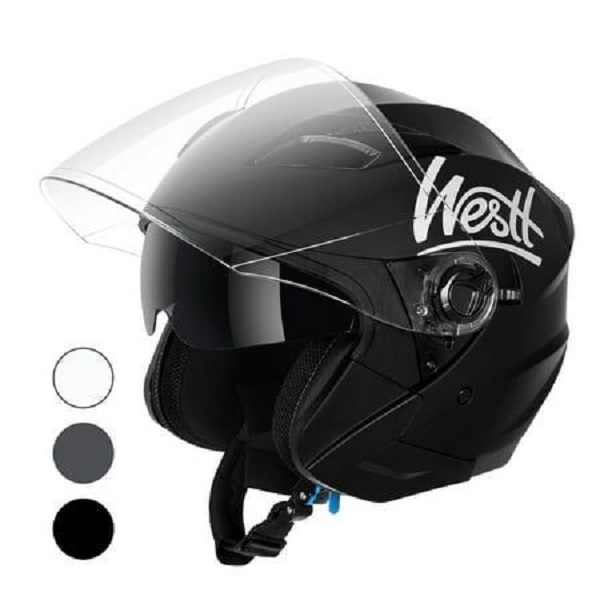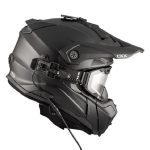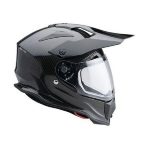Choosing the right motorcycle helmet is crucial for your safety and comfort on the road. With countless options available, it can be challenging to identify what makes a good motorcycle helmet. This guide delves into the essential features you should consider when selecting a helmet, ensuring you make an informed decision for optimal protection and enjoyment.
Essential Features of a Good Motorcycle Helmet
Safety Standards
The primary purpose of a motorcycle helmet is to protect your head in case of an accident. Look for helmets that meet rigorous safety standards:
- DOT Certification: In the U.S., ensure the helmet is DOT-approved. This certification indicates that the helmet meets minimum safety requirements.
- Snell Certification: Helmets with Snell certification offer additional safety assurance, as they undergo more stringent testing beyond DOT standards.
- ECE Certification: European helmets often come with ECE certification, which is another robust safety standard recognized internationally.
Shell Construction
The helmet’s outer shell is vital for absorbing impact energy and protecting your head. Common materials used include:
- Fiberglass: Offers a good balance between weight and strength, providing solid protection while being relatively lightweight.
- Carbon Fiber: Known for its high strength-to-weight ratio, carbon fiber helmets are extremely lightweight and durable, though they can be more expensive.
- Polycarbonate: A budget-friendly option, polycarbonate helmets are impact-resistant and durable but may be slightly heavier than other materials.
Impact Absorption
Inside the helmet, the liner plays a crucial role in impact absorption. Look for helmets with:
- EPS Liner: Expanded Polystyrene (EPS) liners are common and effectively absorb impact energy by compressing during a collision.
- Multi-Density EPS: Some helmets feature multi-density EPS liners that offer better protection by providing varying levels of impact absorption.
Comfort and Fit
Proper Fit
A good motorcycle helmet should fit snugly without being uncomfortable. Consider:

- Size: Use a helmet size chart to find your correct size. A well-fitting helmet should not move around on your head and should feel snug but not overly tight.
- Adjustability: Look for helmets with adjustable features, such as removable padding and adjustable straps, to achieve a personalized fit.
Ventilation
Adequate ventilation is essential for comfort, especially on long rides. Check for:
- Ventilation Ports: Helmets with multiple vents and airflow channels help keep you cool and reduce fogging.
- Breath Deflector: Some helmets include breath deflectors to minimize fogging by directing your breath away from the visor.
Liner Material
The interior lining should be comfortable and moisture-wicking. Look for:
- Removable and Washable Liners: These allow for easy cleaning and maintenance, keeping the helmet fresh and hygienic.
- Soft Padding: High-quality, soft padding enhances comfort and reduces pressure points.
Style and Design
Helmet Types
Different helmet styles cater to various riding preferences. Consider:
- Full-Face Helmets: Provide comprehensive protection and are ideal for high-speed rides and touring. They cover your entire face, offering maximum safety and wind protection.
- Modular Helmets: Feature a flip-up chin bar, combining the protection of a full-face helmet with the convenience of an open-face helmet.
- Open-Face Helmets: Offer less coverage but are popular for their comfort and visibility. They are suitable for casual riders and those who prefer a more open riding experience.
- Half Helmets: Provide minimal coverage and are often chosen for their lightweight and easy-to-wear nature. They offer less protection but are preferred by some riders for short trips or warmer climates.
Aesthetics
While safety is paramount, many riders also consider the helmet’s appearance. Choose a helmet with a design and color scheme that matches your personal style and motorcycle.
Additional Features to Consider
Noise Reduction
A helmet that reduces wind and road noise can significantly enhance your riding experience. Features to look for include:

- Noise-Reducing Padding: Helmets with built-in noise-reducing features or thicker padding can help minimize wind and road noise.
- Seal and Fit: Ensure the helmet’s fit and seal around the neck and chin are effective in reducing noise.
Communication Systems
If you plan to use a communication system, choose a helmet that is compatible with Bluetooth or other communication devices. Some helmets come pre-equipped with communication ports or have built-in systems.
Visor and Shield
The visor is crucial for visibility and protection. Consider:
- Anti-Fog and Scratch-Resistant Coatings: Look for visors with these coatings to ensure clear vision in various weather conditions.
- UV Protection: A visor that offers UV protection helps shield your eyes from harmful sun rays.
Budget Considerations
Price Range
The cost of motorcycle helmets can vary widely based on features and materials. Consider:
- Budget-Friendly Options: Affordable helmets can still offer good protection and comfort, but they might lack some advanced features.
- Premium Helmets: Higher-end helmets often come with advanced safety features, superior materials, and enhanced comfort but come at a higher price.
Value for Money
When choosing a helmet, balance cost with the features you need. Investing in a quality helmet is crucial for safety and comfort, so consider long-term value rather than just initial expense.
How to Test a Motorcycle Helmet
On-Site Testing
When selecting a helmet, it’s essential to test it in person. Here’s how:
- Try Before You Buy: Visit a store where you can try on different helmets. Ensure the helmet feels snug and comfortable without creating pressure points.
- Check for Movement: Move your head around to see if the helmet shifts. A properly fitting helmet should remain stable and not slide.
- Wear It for a While: If possible, wear the helmet for a short period to assess comfort. This helps determine if it remains comfortable over extended use.
Online Considerations
If buying online, look for:
- Return Policies: Ensure the retailer has a good return policy in case the helmet doesn’t fit as expected.
- Size Charts: Use the manufacturer’s size chart to find the best fit. Measure your head accurately and compare it with the chart.
- Customer Reviews: Read reviews to gauge the helmet’s fit, comfort, and performance from other riders’ experiences.
Maintenance and Care for Your Helmet
Regular Cleaning
Proper maintenance can extend the life of your helmet. Follow these tips:

- Clean the Exterior: Use mild soap and water to clean the helmet’s outer shell. Avoid harsh chemicals that can damage the helmet’s materials.
- Clean the Liner: Remove and wash the interior liner according to the manufacturer’s instructions. Many liners are removable and washable.
- Check for Damage: Regularly inspect the helmet for signs of wear or damage. Replace the helmet if you notice cracks or significant dents.
Storage Tips
Proper storage helps maintain your helmet’s condition:
- Avoid Extreme Temperatures: Store your helmet in a cool, dry place. Extreme heat or cold can degrade the materials over time.
- Use a Helmet Bag: A helmet bag can protect your helmet from scratches and dust when not in use.
- Keep Away from Chemicals: Store your helmet away from chemicals and solvents that could damage the materials.
Upgrading Your Helmet
When to Upgrade
Consider upgrading your helmet if:
- It’s Over Five Years Old: Helmets have a recommended lifespan of around five years. Even if it looks fine, older helmets may not provide the same level of protection as newer models.
- It’s Been Involved in an Accident: Replace your helmet after any significant impact, even if it doesn’t show visible damage. The internal structure may be compromised.
- You Need Enhanced Features: If your riding needs change or you want better comfort or features, upgrading can enhance your riding experience.
Finding the Right Upgrade
When upgrading:
- Assess New Features: Look for helmets with advanced safety features, improved ventilation, or added comfort that suit your current riding needs.
- Stay Within Budget: Balance the cost with the features you need. Investing in a higher-quality helmet can offer better safety and comfort.
- Read Reviews: Check reviews and ratings of potential upgrades to ensure they meet your expectations and offer good value.
Final Thoughts
Selecting the right motorcycle helmet involves careful consideration of safety, fit, comfort, and features. By understanding what makes a good motorcycle helmet, you ensure that your choice enhances your riding experience and provides the protection you need.
Conclusion
Choosing the right motorcycle helmet involves evaluating several critical factors, including safety standards, shell construction, comfort, and additional features. By understanding what makes a good motorcycle helmet, you can make an informed decision that enhances your riding experience and ensures your safety.


